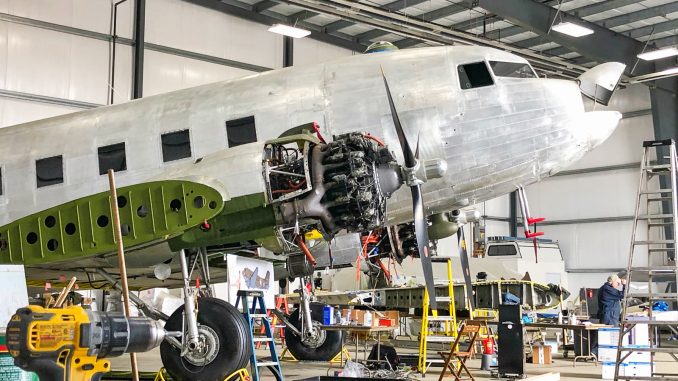
It has been almost six months since we last updated readers on progress with Vintage Wings Inc’s combat veteran Douglas C-53 Skytrooper Beach City Baby. The Operation Torch veteran and workhorse of the North Africa Campaign moves ever-closer to completion in her hangar at Franklin Venango Regional Airport just north of Pittsburgh, Pennsylvania. Her restoration effort continues to steadily advance, and the exceptional quality of work leaves no detail unaddressed.
Vintage Wings Inc’s leader, Jason Capra brings us the following update!
As of March 2020, the Vintage Wings Inc. team has made much progress on the continued restoration of Beach City Baby. After our last article for Warbird Digest, the team began the process of completely removing the entire tailwheel assembly – all of it. We stripped and cleaned each of the parts, and replaced all associated fasteners. Removing the tail gear had the additional benefit of allowing access to the more awkward to access areas of the empennage. We were therefore able to give this part of the airframe a thorough inspection and cleaning, while also replacing all of the tail section’s hardware and wiring.

Once the interior empennage work was done, the tailwheel assembly was repainted using a PPG Aerospace two-part epoxy preparation and finished to look just as it did in 1942. We were very fortunate to locate and purchase an original New Old Stock (NOS) tailwheel fairing from Paul Bazeley’s Aerometal International. We cleaned and painted this rare fairing, a type found on early model C-53s, before installing it to complete the restoration of the tailwheel assembly.

Another major hurdle we overcame was the complete stripping, cleaning, and surface preparation of the entire cabin interior, radio station, navigator station, and baggage compartment. Again, with much investigation going into the cabin restoration, the paint research was very educational. Like many aircraft already on the production lines prior to America’s entry into World War II, the C-53’s cabin and flight compartments were actually painted olive drab. Unlike many of the C-47 family, which the demands of war bade a hastier construction time, the C-53’s had more “attention and time” on the factory floor. Being built as a VIP transport, the cabin received early matte olive drab paint and dark green, diamond stitch insulation along with military style passenger seats. The only area which received the standard “Interior Green” was just the baggage compartment. Again, using PPG Aerospace two-part epoxy, the entire interior was shot with early, pre-war, lusterless olive drab and the baggage compartment with interior green as well as all door frames and escape hatches. Once dried, the restoration crew fabricated a brand-new aft cabin bulkhead, door frame, and door. Again, unlike the C-47, the C-53’s bulkheads and doors were made of plywood and not aluminum which was stamped and manufactured on the C-47.
The baggage compartment and cabin soon had all of its insulation pieces mocked up with poster board and fitted since no original examples could be found. Each piece was hand made from replica insulation made to look exactly as it did in WWII. The Lamart Corporation graciously made and donated these fabric insulation pieces to us. The company makes aircraft insulation for modern military aircraft, so it made sense to approach them. Each piece was cut from two 50-yard rolls, sewn and stitched before returning to the airplane for fitting. Once fitted, we added button snaps to the insulation pieces, and the appropriate studs for attaching them to the aircraft fuselage itself. Again, much research went into all of the items required to fit out the cabin and baggage compartment for early model C-53-DOs. With the help of eBay and our good friend Mr. Josh DeJong, we were able to make or find every single piece needed for the interior. Josh’s company, The Rigger Depot, had recently made uniforms and hard to find pieces for both the recent Hulu series Catch-22 and the theatre-released movie Midway. These pieces included all of the C-53’s Aeronautical First Aid kits (with interior pieces), litter strap bags, flight control lock bags, and flight accessory stowage bags. Also, as I write these words, we have just refinished the entire baggage compartment with all-new floorboards, tie down straps and hardware, while also installing an original dome light and switch. We are currently starting on the fabrication of all-new floorboards for the entire cabin to replace the rotted and beaten originals currently in place.
Another amazing restoration piece on the C-53 was the addition of the astrodome, astrodome ring and an original astrocompass on its slide mount. Pieced together from other collectors and eBay, we were able to reconstruct the dome and all original pieces to make the area look completely stock 1942. Even the dome itself is NOS with a 1942-dated manufacturing stamp. That being said, we did have to refabricate two guides for the astrocompass mount. Our friend Patrick Mihalek came to our rescue and made these parts for us. As most readers will remember, Mihalek oversees the restoration of the North American B-25J Mitchell known as The Sandbar Mitchell.


Moving to the outside of the aircraft, the restoration team has replaced all of Beach City Baby’s lights, as well as adding all-new radio, nav, comm, and GPS antennas to the airframe. We will soon be installing our ADS-B system as well. All avionics and radios are having their wiring harnesses started and wired which, when complete, will be returned to the airplane for installation. All of the C-53’s flaps, which were completely rebuilt and re-skinned, have been cleaned, prepped and painted. They are now in storage awaiting installation. The rudder and two elevators, which were also re-skinned prior to the flight to her new home here in Pennsylvania, were cleaned and prepped recently as well, before being shot with PPG Aerospace’s paint and placed in storage. Being able to see parts of the aircraft receive final paint and awaiting installation is beyond exciting, and helps inspire the team to keep up our amazing effort to give our aircraft the best restoration we can.
Finally, the two main areas of focus that are taking most of the effort and time are the replacement and fabrication of all the aircraft’s fluid lines, and the rebuilding of both left and right outer wings. When built in 1941-42, the C-53, like many other aircraft at that time, had what are known as “AC Standard” fittings installed. It is virtually impossible to find enough airworthy AC hardware these days, and not practical to attach it to other standard hardware as all of this AC hardware on the fluid lines has flares and hardware with 30° angles. Again, theses flares, known as “Parker Triple Fittings,” or AC is being replaced by the more modern and plentiful “AN” flare and fitting which has a 37° flare and shoulder. In the interest of modernizing and standardizing our aircraft’s fluid lines we decided to just “go for it” and replace everything we could in the interest of safety. As one can imagine, there’s quite a few yards of tubing in a DC-3/C-53 and the time and effort required to replace it is monumental. Luckily, we have a very dedicated individual who has single-handily taken on this task; his effort and work are beyond amazing, and greatly appreciated.


The wings have been an entirely separate battle, however. When we removed them to comply with an FAA Airworthiness Directive (covered in depth in a previous article HERE), we discovered ribs and stringers with signs of corrosion. They needed replacing. Our dedicated team of mechanics and volunteers have religiously hammered away at this project 3-4 times a week for almost a year now to completely revive and restore the wings. I am happy to report again that, as we go to print, all but four ribs remain in need of repair before the left wing is finished. The team will start their restoration of the right outer wing once the left side is done. Much thanks must also go to both Basler Turbo Conversions and Preferred Airparts. This project has been able to progress with their significant assistance in technical knowledge as well as parts and materials.
As winter gives way to spring, and work on the fuselage and center wing wraps up, the team eagerly looks forward to the final pieces and parts being added to the fuselage and for painting to begin. Our goal is to conduct engine runs and test fluid lines by this spring before a final cleaning and paint preparation takes place. Work will continue on the left and right outer wings and our team remains on track for completion in the summer of 2021. More than anything, our 501.c3 Historical Foundation is funded entirely by donations and support from folks like yourselves.
The mission at Vintage Wings Inc. is to create a flying classroom – a mobile living history museum. Our flying aircraft, when finished, with all its sights, sounds and smells is uniquely qualified for this purpose, and simply cannot be replicated. The C-53’s cabin will become a classroom with learning modules using key points in its distinct history that align with key points in aviation history. Guests will see the significance of its role as a military C-53 and how it helped win WWII.
Taking part in air shows, fly-in’s and other aviation related events, Beach City Baby will offer far more than just a silent and empty cabin – it will be a step back into our past for an exploration of who we are today. Vintage Wings Inc’s core goal is to inspire future generations by telling our amazing aircraft’s history and the stories of the men and women who fought for our freedom.
Many thanks to Jason Capra for this detailed restoration update. We hope you have enjoyed hearing about this important project. To learn more about Beach City Baby, or to make a donation, please visit the group’s website at www.vintagewingsinc.com. Vintage Wings Inc. is a 501c3 nonprofit historical foundation which relies heavily on public and private donations, so please consider making a financial contribution to help keep the restoration going and to ensure she flies for years to come. They can’t do this without you!


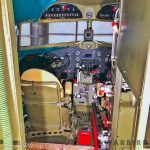
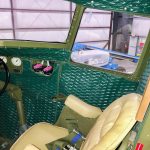
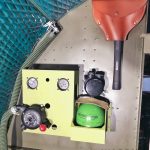
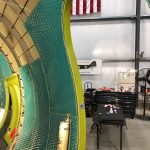



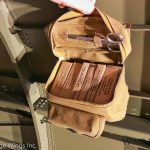
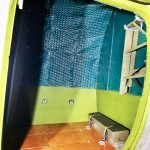

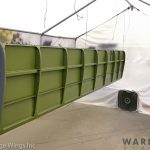
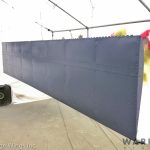
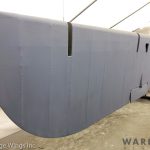


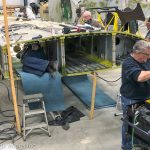
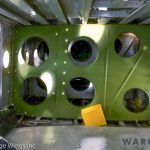
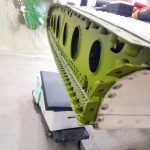
3 Trackbacks / Pingbacks
Graphic Design, Branding and Aviation Art